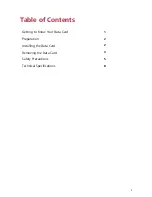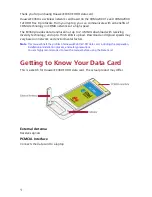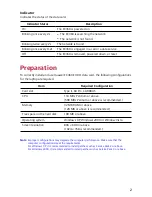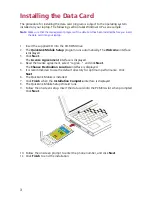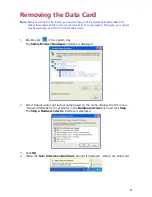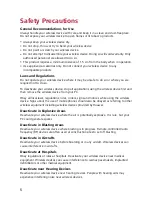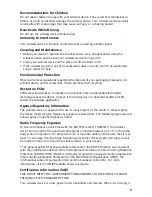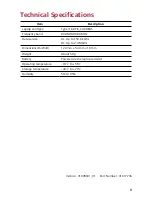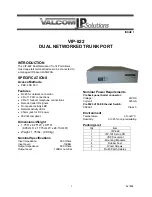
6
Recommendations for Children
Do not allow children to play with your wireless device. They could hurt themselves or
others, or could accidentally damage the wireless device. Your wireless device contains
small parts with sharp edges that may cause an injury or a choking hazard.
Deactivate While Driving
Do not use the wireless device while driving.
Immunity to Interference
Your wireless device is immune to interferences caused by audible signals.
Cleaning and Maintenance
y
Before you clean or maintain the wireless device, stop all applications using the
wireless device and remove your wireless device from your PC.
y
Clean your wireless device with a piece of soft antistatic cloth.
y
If the wireless device or any of its accessories does not work, turn to an authorized
service center for help.
Environmental Protection
Observe the local regulations regarding the disposal of your packaging materials, old
wireless device and its accessories. Please promote their recycling.
Restart on ESDs
Software will attempt to re-initialize a connection once a substantial electrostatic
discharge causes the device to reset. If the software is not operational after an ESD,
restart the software application.
Agency/Regulatory Information
The wireless device is approved for use in many regions of the world. In these regions,
the device meets all radio frequency exposure requirements. The following approvals and
notices apply in specific regions as noted.
Radio Frequency Exposure
To ensure compliance at all times with the R&TTE Directive* 1999/5/EC, the wireless
device can be held in the hand but still requires a minimum distance of 1.5 cm from the
body when in operation. For body-worn use, it must be suitably mounted so that it is at
least 1.5 cm away from the body. Mounting accessories (for example, belt clips) cannot
be made of metal. Do not put the wireless device in your pocket.
* The general public RF exposure limits referenced in the R&TTE Directive are consistent
with the published Guidelines of the International Commission on Non-Ionizing Radiation
Protection (ICNIRP) 1998. ICNIRP is a formally recognized non-governmental organization
in Non-Ionising Radiation Protection for the World Health Organisation (WHO), the
International Labour Organisation (ILO) and the European Union (EU). For more
information, visit the ICNIRP website at www.icnirp.de.
Certification Information (SAR)
THIS DEVICE MEETS THE GOVERNMENT'S REQUIREMENTS FOR EXPOSURE TO RADIO
FREQUENCY ELECTROMAGNETIC FIELD.
Your wireless device is a low-power radio transmitter and receiver. When it is running, it


